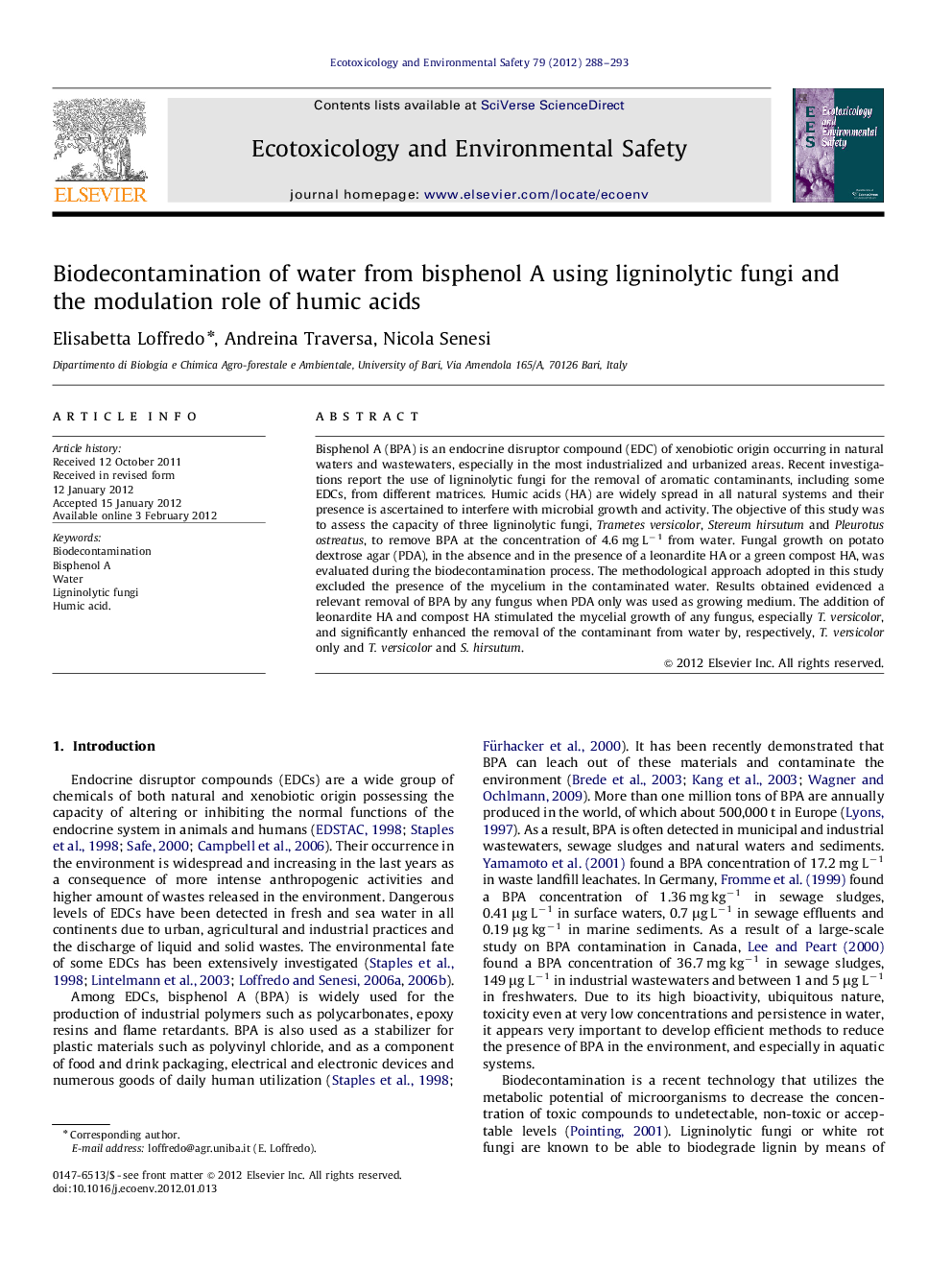| Article ID | Journal | Published Year | Pages | File Type |
|---|---|---|---|---|
| 4421003 | Ecotoxicology and Environmental Safety | 2012 | 6 Pages |
Bisphenol A (BPA) is an endocrine disruptor compound (EDC) of xenobiotic origin occurring in natural waters and wastewaters, especially in the most industrialized and urbanized areas. Recent investigations report the use of ligninolytic fungi for the removal of aromatic contaminants, including some EDCs, from different matrices. Humic acids (HA) are widely spread in all natural systems and their presence is ascertained to interfere with microbial growth and activity. The objective of this study was to assess the capacity of three ligninolytic fungi, Trametes versicolor, Stereum hirsutum and Pleurotus ostreatus, to remove BPA at the concentration of 4.6 mg L−1 from water. Fungal growth on potato dextrose agar (PDA), in the absence and in the presence of a leonardite HA or a green compost HA, was evaluated during the biodecontamination process. The methodological approach adopted in this study excluded the presence of the mycelium in the contaminated water. Results obtained evidenced a relevant removal of BPA by any fungus when PDA only was used as growing medium. The addition of leonardite HA and compost HA stimulated the mycelial growth of any fungus, especially T. versicolor, and significantly enhanced the removal of the contaminant from water by, respectively, T. versicolor only and T. versicolor and S. hirsutum.
► Biodecontamination of water from bisphenol A by ligninolytic fungi. ► The role of humic acid in fungal growth medium on the decontamination process. ► Effects of different growth media on fungal growth and activity. ► A new biodecontamination methodology using ligninolytic fungi.
